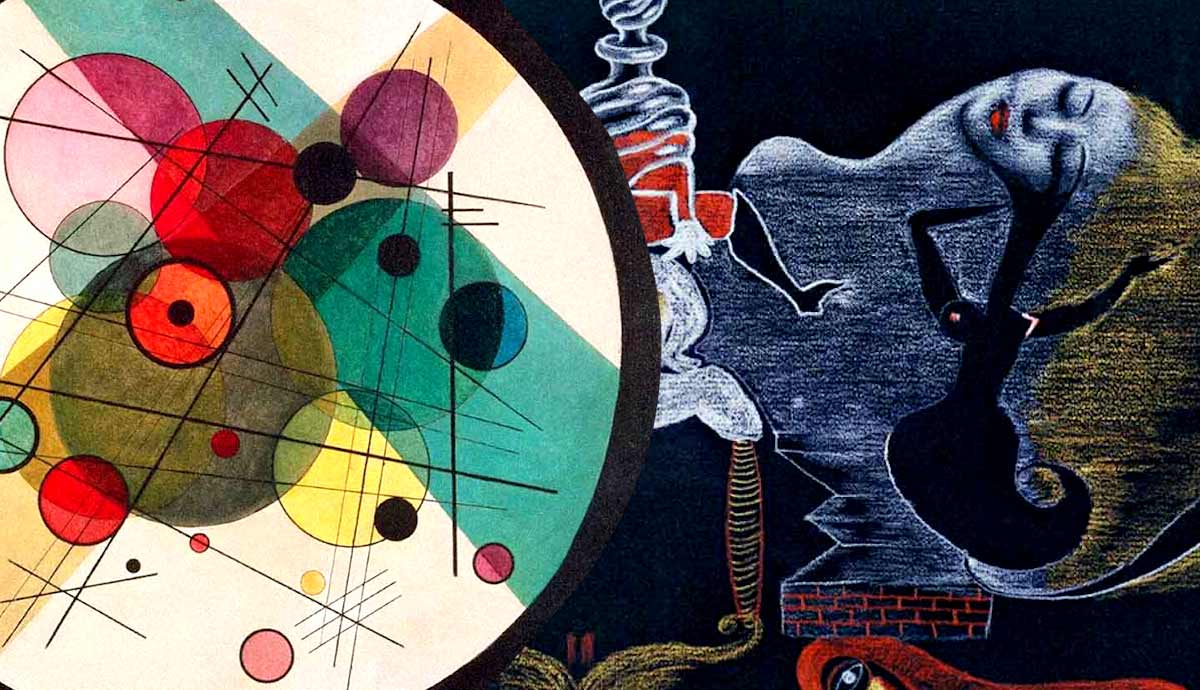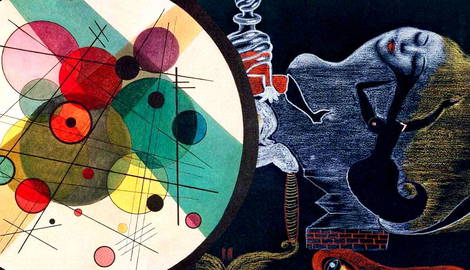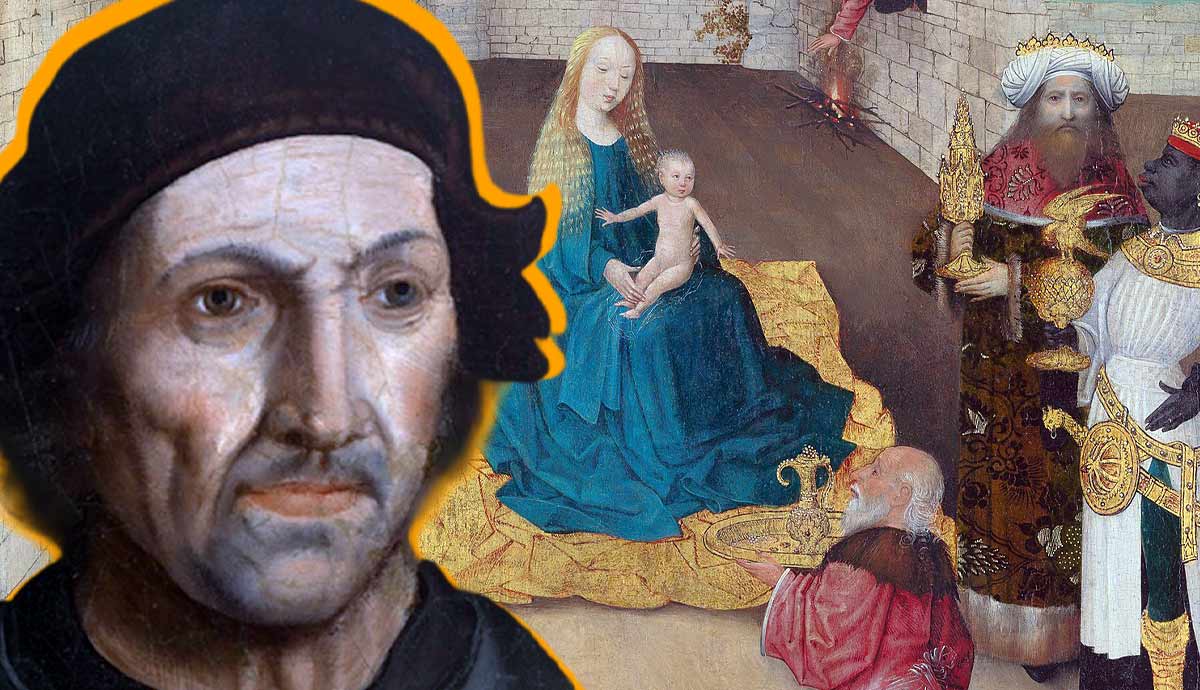
The 1920s was a period of cultural revolution that came soon after the traumatic events of World War I. The mass-scale violence and terror, as well as the significant technological progress, made traditional forms of art seem outdated. Some artists aimed to reinvent their visual language by rejecting the physical world altogether and focusing on intangible concepts. Others preferred escapism to exploration, diving deep into the loud and dramatic bohemian lifestyles, reflecting upon the new modernity. Let’s take a look at the eight important artists of the Roaring Twenties.
1. Tamara de Lempicka: The Queen of the Roaring Twenties

Tamara de Lempicka, the French artist of Polish origin, lived a long and dramatic life full of sharp turns. From a penniless refugee escaping the turmoil of the Russian Revolution, she turned into a Parisian celebrity and a legendary artist who was welcome in the most affluent circles. She first started to paint from a dire need to support herself and her daughter. With her fame growing, she carefully formed not only her style but her artistic persona too. Lempicka did not only work in Art Deco style—she lived it with her dresses, cars, and public appearances contributing to the legend of a modern emancipated woman.
In terms of artistic style, Lempicka’s Art Deco referenced earlier explorations by Cubist artists and the decorative style of Post-Impressionists like Maurice Denis. Her identity as a free-spirited queer woman allowed her to develop her own optics, through which she treated the subjects of female sexuality, desire, and beauty. Lempicka’s female characters, both wealthy women and random models encountered on the streets, exude confidence and controlled eroticism. They seem completely in charge of their behavior and opinions.
2. Salvador Dali

The most famous Surrealist of his time hardly needs an introduction. Salvador Dali spent most of the 1920s in his native Spain, soaking in the influences of Diego Velazques and Francisco de Zurbaran. His art of that period developed from his studies of Spanish landscapes, the Old Masters paintings, and Sigmund Freud’s research on sexuality and psyche. Colleagues have always seen him as a talented artist, but on a personal level, Dali often seemed too weird, even for the odd crowd of Surrealists.
Apart from his prolific artistic career, Dali worked with product design and advertising. In the 1930s, he collaborated with the legendary fashion designer Elsa Schiaparelli, designing dresses and perfume bottles for her brand. He painted stocking ads in his signature complex style and even created several famous brand logos. The older Dali got, the more abundant and absurd his media presence became, with the famous artist promoting almost everything, from chocolate bars to anti-hangover pills.
3. Wassily Kandinsky

Wassily Kandinsky, considered one of the fathers of abstract art, was a well-educated man with versatile interests. His decision to become a painter came to him in his thirties and reflected his previous decades filled with various experiences and education. In the 1920s, he taught art theory at the Bauhaus, a progressive art school that aimed to revolutionize design and visual expression.
One of the most significant episodes of Kandinsky’s creative life happened in his early twenties, when he joined an ethnographic research group as their lawyer, traveling with the group to remote Russian villages. There, he encountered local folk art that filled churches and houses from floor to ceiling, creating an impression of all-encompassing work that absorbed its viewer. From that impression, Kandinsky developed a fascination with folk arts and crafts, first translating it into the language of expressionist art and later departing into complete abstraction.
4. Ernst Ludwig Kirchner

Ernst Ludwig Kirchner was among the leaders of the German Expressionist movement. Like many of his colleagues, he had a profound interest in non-Western and primitive art, experimenting with the simplification of forms to maximize the emotional impact. In his compositions, Kirchner often used aggressive neon colors, sharp angles, and distorted proportions. His signature subject matter was the anxiety and chaos of modern cities, both threatening and alluring, desirable and nauseating. Apart from painting, he worked with woodblock prints, creating similar rough-edged compositions.
Like many other German artists, Kirchner volunteered during World War I and experienced the scale of destruction first-hand. A year after entering service, the artist was dismissed due to a severe mental breakdown. While his pre-war paintings attracted crowds and inspired younger creatives, Kirchner was spending his 1920s recovering from deep mental trauma caused by the war. Despite all efforts, he committed suicide in 1938, leaving his fears and anxieties to inhabit his paintings forever.
5. Marcel Duchamp

The long and prolific career of Marcel Duchamp covered many art forms and movements but retained its multi-layered contextuality and ambiguity. Working with found objects and readymade, Duchamp was among the first artists who decided to sever the link between a work of art and its embodiment. In other words, he was the pioneer of Conceptual Art, which prioritizes artistic ideas over artistic effort. Duchamp’s authority in artistic circles was unshakeable, with generations of artists following his example.
The 1920s was among the most prolific periods in Duchamp’s career. He constructed intricate mechanisms and encased them between glass panels, like in one of his most famous works The Bride Stripped Bare by Her Bachelors, Even. Duchamp spent seven years planning and executing the work, yet, ironically, the finishing touch came from a clumsy art handler, who dropped the glass panel which made it crack. Duchamp eagerly accepted the involvement of fate, conserving the damage.
6. Piet Mondrian

The Dutch abstract painter Piet Mondrian, like many other creatives, spent the Roaring Twenties in Paris, which was then the heart of artistic innovation. The artist was already in his fifties and had a significant record of artistic achievements and innovations. His minimalist abstract art was a highly intellectual alternative to the abundance of Art Deco and Surrealism, focusing on pure line and color rather than form. However, in Paris, Mondrian came up with a new idea. He started to tilt his canvases at a 45-degree angle, thus creating diamond-shaped square paintings.
Like many other abstract artists of his generation, Mondrian searched for a way to revive and reinvent dated art forms and techniques. In his art theories, the artist explained the need to reject everything conventional and established and reduce art to the simplest forms possible. These forms—mostly squares of primary colors—were supposed to gradually develop into a new artistic language that would retain values and ideas relevant to the current age.
7. Georgia O’Keeffe

The great American artist Georgia O’Keeffe started to gain prominence during the 1920s and quickly became one of the most famous artists of her time. In that decade, she found her most recognizable artistic language, close-up paintings of flowers arranged in a way that almost turned them into abstraction.
Georgia O’Keeffe’s gender was an insurmountable barrier to many who tried to interpret her work. Her work was criticized as too feminine or too sexual, despite the artist rejecting any erotic connotations of her paintings. Unlike many other women artists, her romantic affiliation with another famous creative did not bring harm but rather propelled her career. In the late 1910s, O’Keeffe met the famous photographer Alfred Stieglitz, who actively promoted her art and helped her gain prominence in the early years of her career.
8. Andre Breton: A Roaring Twenties Legend

Andre Breton is most frequently mentioned as a poet or the ideological leader of the Surrealist movement rather than an artist. Nonetheless, he was both an intellectual and creative force behind many of the 1920s artistic innovations. Before turning to art, he was a medical student with a profound interest in psychiatry, and later brought his knowledge and curiosity to creative use. Like Marcel Duchamp, Breton was initially affiliated with the Dada movement, a radical and provocative form of art reacting to the societal crisis.
As an artist, Andre Breton often worked with collages and drawings, bringing together seemingly unrelated elements to evoke associations and subconscious ideas. Sometimes, his literary practice transgressed the limits of text and turned into visual art. He comprised nonsensical poems from random newspaper clippings or even found objects which he arranged in an order understandable only to him.










